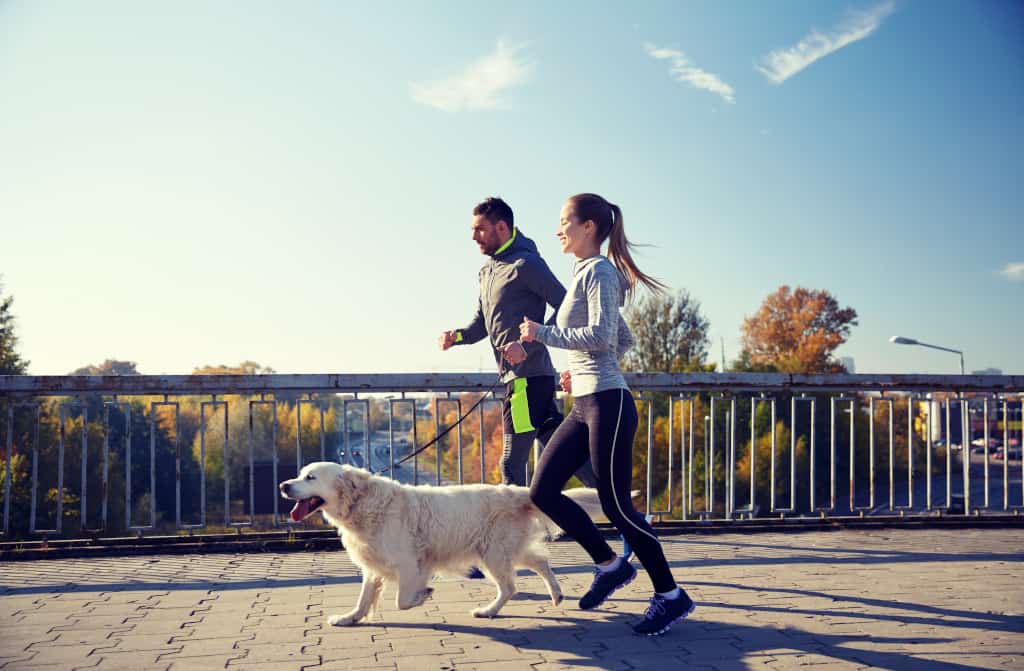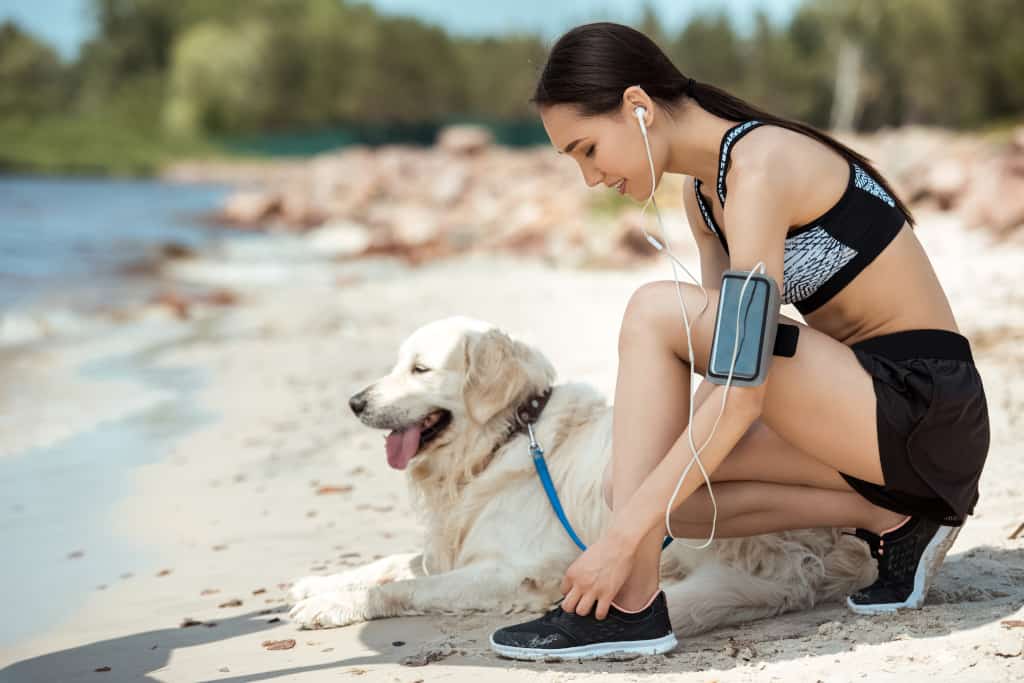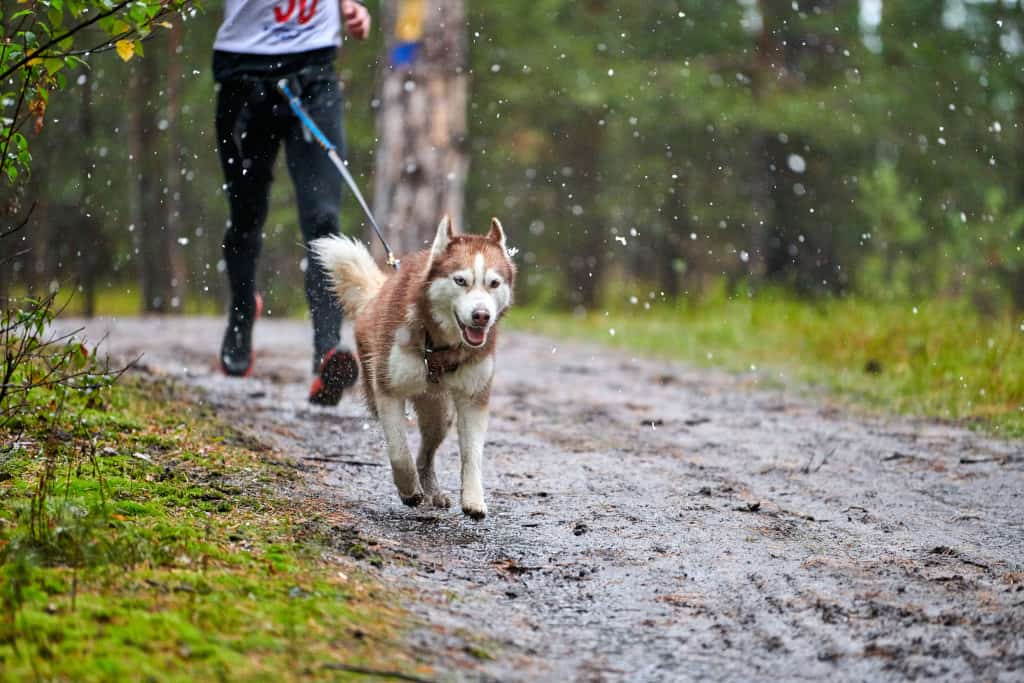If you find yourself looking for a new hobby, running with your dog might just be the thing! Running is not only a good exercise for humans but also excellent for dogs, as it gives them the chance to get out of the house or yard now and again. Plus, most dogs love to go for a run with their owners, and most importantly, it can help improve their physical and mental health.
Dog lovers also know that there is no better way to exercise and spend time with their pups than having a run. The best part? You can take them on all the trails and through parks! But before you grab your shoes and hit the ground running with your rover, it’s crucial to understand some of the dos and don’ts to make sure you’re ready when adventure calls!
And if you’re new to running with your dog, you may be hesitant to take on this new challenge as you are unsure how to train them or what gear they’ll need when going out for a jog together. In this blog post, we will cover all of the basics and everything you need to know so that you don’t need to worry about being unprepared when starting your journey as a runner and owner of a superb canine companion!
Read More:
Before You Go Running With Your Dog

1. Dog Breeds Matter!
Which dog breed do you have? That will help determine if they’re going to make a good running partner or not. Certain dog breeds are better suited, especially those that have a lot of energy and long legs. Some popular ones? Hounds, retrievers, and sheepdogs like Border Collies.
Not saying that other dogs or dogs with short legs like corgis and terriers can’t do it, but they will not be a good match, although they should do just fine running short distances.
However, if you have brachycephalic dogs like pugs or bulldogs, running may not be the best idea for them! The reason is that they have breathing difficulties and are more susceptible to heatstroke, which can be life-threatening.
2. How Old is Your Dog?
Do you have a puppy? As a general rule of thumb, you should at least wait until they are one year or eighteen months old before letting them begin any running regimen, depending on the breed. That is to prevent damaging their growth plates and allow their joints and bones to fully develop for safety, comfort, and longevity of life! Small dogs will be able to run with you earlier as they mature faster than their larger counterparts.
It is also best not to let older dogs run with you at all. The reason is that their joints may not be able to handle the stress of jogging anymore. Plus, they are very likely to suffer from other ailments like arthritis and hip dysplasia that can make running painful and difficult.
3. Visit Your Vet
Ok, now you know your dog is a suitable candidate and at the right age for running. The next thing you have to do is schedule an appointment with your vet to get a physical check-up for your canine to make sure they are healthy enough.
4. Train Your Dog to Run!
Once the vet clears your four-legged pal as ready for some jogging sessions, it’s time to start thinking about training your dog to run! Dogs do not naturally know how to run with their owners like they would if they were chasing prey in the wild.
If your furkid pulls a lot on the leash, you need to take a step back and work on that first. The reason is that you don’t want your pup to be pulling you towards squirrels, flowers, and any other sniff spots that interest them during your run, which I’m sure you can imagine how dangerous that can be.
Walk to Heel
Once they’ve learned how to walk nicely, they must be able to walk to heel and master it. Why? Because you don’t want your four-legged friend to be running in front of you or moving from side to side while running, causing you to lose balance and trip over. So, it’s crucial to teach them how to heel to keep them running either on the right or left side of you. It’s straightforward, and here’s how you can do it:
- First, you will need high-value treats and a clicker.
- Call your dog to come, and when they’re by your side and at the correct position you want them to be, click and say “yes, good job buddy” or “good heel,” then reward them with a treat.
- Start walking them inside the house with the lead on, then increase the difficulty by changing your pace, randomly switching directions, do inside turn and outside turn, and every time they do it correctly, praise and reward them.
- Once they’ve got the hang of it, progress to training them outside the house with more distractions.
- If they are doing it wrong, simply correct them and move them over to the correct spot.
- Keep repeating this process until they understand the cue.
It can be challenging for dogs to learn that they should slow down or turn around and come back towards their owner if the leash ever gets slack. Their instinct will likely make them keep going in whatever direction they headed initially.
So, it takes patience and repetition on your part when teaching them how to heel. Choose the side you want them to be, usually the left side, and stick to it. Remember, consistency is the key to success.
Directional and Speed Cues
The cues your dog needs to master next are directional and speed. This way, you can change the pace of your run at any time and keep them on track. You can use words like “move,” “slow down,” “left,” and “right,” and to teach them:
- Again, you will need high-value training treats and a clicker.
- Get your dog to heel and start walking with normal speed.
- Next, change the direction and say the word “left” or “right,” depending on which side you are turning, then click, praise, and reward them if they do it correctly.
- Similarly, when teaching them speeding up and slowing down, as you change your speed, say “move” or “slow down,” then click and reward them if they run side by side with you at the same pace.
- Keep repeating the process until they get the verbal cues right.
Like when training your pup how to heel, practice these commands in a controlled environment first, then only progress to places with more smells and sights distractions.
Sit and Leave it Verbal Cues
Your pup will also need to learn the “sit” command. That way, you can get your dog to stop moving when coming to an intersection and before crossing the street to ensure they are safe. Learning the “leave it” verbal cue, on the other hand, can help keep your canine from picking up and eating something they shouldn’t or stop them from chasing a squirrel during your run.
5. Gear Up Your Dog
Now your dog has learned these basic commands required for running, does that mean they can now hit the trail? No! They need to have the right equipment to ensure they are safe. Here’s the complete list of what they need.
Running Harness
A running harness for dogs is a must to keep your furry friend running by your side. It should be comfortable and fit well, so it doesn’t rub or chafe your dog’s skin. You also need to get the one with reflective material to make them more visible to the cars and people.
Running Leash
To secure your dog, you surely will need a lead, but make sure not to use a retractable leash because that will teach them to pull for more length, which is not what you want. That means a traditional leash will do, although using the hands-free type and paired it with a hip belt may be a better idea, as that will give your hands more freedom, and it also helps keep you running in a natural position.
Dog Boots
Letting your fido run barefoot might not be a good idea as they can get cuts, blisters, and bleeding pads. So, let them wear boots! That can help protect your dog’s paws from rocks, sticks, and hot asphalt, give them a good grip on slippery surfaces, as well as keeping their feet free of debris. If your pup hates wearing it, consider using paw balms instead.
GPS Tracker
A real-time location tracking device for dogs is a must if you want to have peace of mind. Accident happens. Let your dog off-leash while resting, and suddenly they’ve disappeared, and you can’t find them. With a pet GPS gadget, it can help with tracking them down when they become lost.
Dog Water Bottle
It is also vital that you keep your dog hydrated when running with them, especially during warm weather! And while there are several ways you can do this, a portable dog water bottle is an excellent way to ensure your fido has easy access to fresh drinking water on the go.
6. Check the Weather
So, now you’ve got all of the above ticked? Make sure to check the weather before you head out, as running in hot weather can be hazardous for dogs. It can cause your furkid to overheat and lead to heatstroke. Some of the signs of overheating include excessive panting, drooling, disorientation, or change in gum color. If it is too hot out there, stay home!
Running in cold weather is also dangerous, not only for your pup but for you too, in which it can cause frostbite and hypothermia. So when it is too cold outside, consider other activities to do indoors instead. It’s best to be on the side of caution and avoid exposing your pup to these risks!
The perfect temperature for safely running with your dog? Somewhere between 40-65 degrees Fahrenheit.
Other Safety Tips and Things to Consider for Running with Your Dog

1. Start Slow
It’s best to increase mileage over time instead of suddenly taking long runs right off the bat. That way, your pup can get used to running alongside you, plus that can also help get them accustomed to wearing their new gear! Have a training plan and set a realistic goal for both of you. Remember, no dogs are born runners. Your dog needs time and practice before they are ready to jog long distances.
2. Your Dog’s Temperament
All dogs have different personalities. Some may be more energetic, while some are more sluggish. So, don’t push your canine at any stage of the training. Instead, allow themselves time to adjust so that they will love running with you.
3. Warm-Up
Before you exercise, you will surely warm-up and do some stretching to prepare your muscles and make yourself feel more flexible. Your beloved pet needs to stretch, too, to help prevent muscular cramping later on during exercise and reduce the risk of injury.
4. Cool Down
Dogs also need to cool down after a workout, just like us humans do. So, make sure to let your dog walk around the neighborhood for a few minutes after running to let them gradually slow their heart rate back to normal levels.
5. Run on Dirt Trails
Consider running off-road. Not only will the terrain be a lot easier on your dog’s feet than asphalt, but it’ll also allow your pup to explore and smell new scents while running alongside you. One thing, though, make sure to check if the trail is dog-friendly.
6. Protect Your Dog From Ticks
Bringing your dog outdoors comes with its own set of risks. And one of the biggest threats is ticks, in which these parasites may be carrying diseases like Lyme disease that can be passed on to your dog through the bites! If you find any ticks on them, remove the insect gently and apply an antiseptic to the bite area afterward. The best thing you can do? Get a tick-repelling collar explicitly designed for dogs to prevent that from happening in the first place!
7. Keep Your Dog’s Nails Short
It is also crucial that you keep your dog’s nails short. Long nails can trap dirt and debris, leading to the growth of bacteria on their paws. Plus, running with long nails can cause pain! So remember to keep those claws trimmed with a nail grinder, and your pup will thank you for it in the long run.
8. Don’t Forget the Poop Bags!
Accidents are bound to happen one way or another regardless of how careful you are. And whether it’s just a small mess or an unfortunate event, be sure to have some poop bags on hand so that you can clean up the area and get rid of the waste.
Want Something More Challenging for Both You and Your Dog?

You love to run with your dog but prefer something more challenging? Consider canicross.
What is Canicross?
Canicross means cross country running with dogs. It is an activity where you will attach yourself to your dog’s back with a harness, bungee leash, and hip belt. And as your dog runs, the force of their steps will help pull you forward, which you can imagine is way more intense and high-impact than regular running, and it’s best to avoid this sport if you have any knee or back problems.
Your Dog’s Equipment
Your dog will need exactly the same equipment as regular running, except one gear, though, the harness. You will need the one specially designed for pulling, like those sled dogs use, with a high pulling point and shaped in a way that can distribute pressure over your dog’s body evenly when they pull.
Frequently Asked Questions
How many miles can my dog run?
Most dogs can run anywhere from 20 to 35 miles per week. But again, you don’t want to be taking your dog running with you long distances right off the bat. Do it slowly, set a goal, and have a training plan laid out.
My dog hates boots. Is there any other way to protect my dog’s paws?
Should I hire a dog trainer?
Wrapping Up
There you have it! Whether it’s a gun dog, an emotional support dog, or just a companion dog that you are thinking of bringing to go running with you, this article has given you all the information you need to know.
So what are you waiting for? Get out there and start enjoying all that exercise has to offer in the company of your running buddy. Have fun and stay safe!

